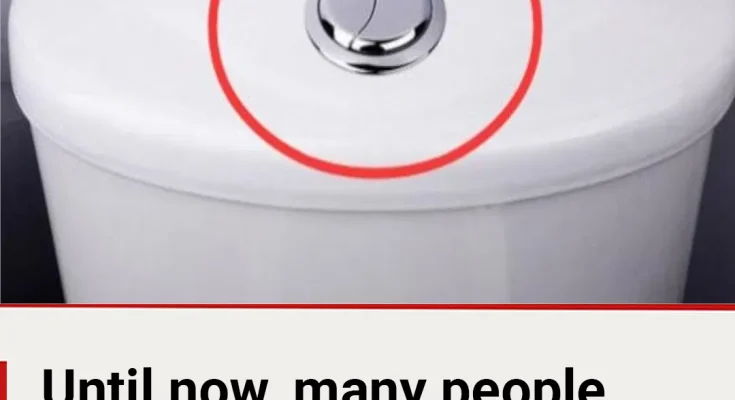If you’ve ever glanced at your toilet and noticed two buttons or levers instead of one, you’re not alone. Many people still don’t realize what these buttons actually do. Modern toilets are designed to be more efficient, eco-friendly, and wallet-friendly. Here’s a complete guide to understanding the “dual flush” system and how using it correctly can make a big difference.
What Is a Dual Flush Toilet?
Dual flush toilets have two separate buttons or levers — usually one smaller and one larger. Each is connected to its own valve, which controls how much water is released per flush. This gives you the power to choose how much water you use, depending on the type of waste you’re flushing. The small button or lever releases less water for liquid waste, while the larger button releases more water for solid waste. This isn’t just a design feature — it’s a water-saving innovation.
How Much Water Does Each Button Use?
The small button typically releases around three to four and a half liters of water, perfect for urine or other light flushes. The large button releases about six to nine liters of water, which is better for solid waste. By choosing the correct button each time, you’re preventing unnecessary gallons from going down the drain.
The Environmental and Financial Benefits
Using a dual flush toilet properly can save an average household up to twenty thousand liters of water per year compared to a single-flush model. Over time, this translates to lower water bills every month, reduced strain on municipal water supplies, and a smaller environmental footprint. While the upfront cost of a dual flush toilet may be slightly higher, it pays for itself in savings and sustainability.
A Brief History of the Dual Flush Idea
The concept of a dual flush system was proposed by American industrial designer Victor Papanek in his 1976 book Design for the Real World. The first large-scale implementation happened in Australia in 1980, where water conservation was already a priority. From there, the idea spread globally and is now a standard feature in many new homes and businesses.
How to Identify the Right Button
Manufacturers use symbols or shapes to guide you. A half circle or raindrop icon often marks the small flush for liquid waste. A full circle or larger button marks the large flush for solid waste. Look closely at your toilet — you may even see written indicators such as “3L” or “6L” to show water volume.
Extra Tips to Maximize Your Savings
Make sure everyone in the home, including kids, understands which button to use. Even dual flush toilets can develop leaks, so a simple dye test in the tank can reveal hidden water loss. Clean the buttons and valves periodically to keep them working smoothly. If your current toilet is very old, consider replacing it with a newer, more efficient model for maximum savings.
Common Myths About Dual Flush Toilets
A common myth is that both buttons do the same thing, but they actually use very different water volumes. Another misconception is that dual flush toilets are hard to use, when in fact it’s as simple as pressing the right button for the right waste type.
The Bottom Line
Dual flush toilets are one of the easiest ways to practice sustainability at home without sacrificing comfort. By pressing the small button for liquids and the large button for solids, you save thousands of liters of water, reduce your bills, and help protect the environment. So next time you’re in the bathroom, take a moment to press the right button — it’s a small action with a big impact.



